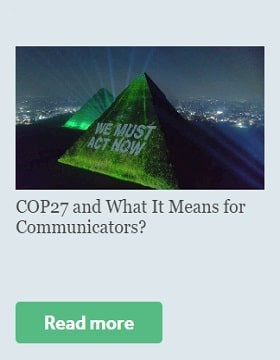
Going from Global to Local through Digital Marketing

Rare Disease Care Across Asia Pacific
Net Zero and Energy Transition Communications
February 2023

By Sandpiper’s Energy and Environment practice team. Our team of experts advise companies on anchoring ESG at the heart of their organisations, help them communicate their sustainability story, and demonstrate the value they bring in the markets where they operate.
With increased scrutiny of companies’ sustainability journeys, companies need to start communicating real action and not just fluffy pledges. The language of a ‘just transition’ is being used more widely, but is your company really supporting a managed transition – or just dragging its heals?
Get real.
It’s time to get real and help your stakeholders understand the real issues and what you are doing to keep warming below 2°C. A useful way to think about this problem and how to communicate it is in terms of a carbon budget. By 2017 we had already emitted about 2.2 trillion tonnes, so we can stay under 2°C warming if we limit future emissions to around 1.5 trillion tonnes. This is a tight budget: With present-day emissions exceeding 40 billion tonnes per year we will blow through our remaining budget by the 2050s.
The just energy transition: gaining power or losing steam?
The phrase “a just transition” has been used to integrate the social and human impacting areas of moving towards renewables and away from coal.
The MDG’s and the SDG’s highlighted the need to focus on many aspects. The discussion around a just transition is ongoing, i.e The Just Energy Declaration was signed by 16 North American and European governments at COP26, to encourage workers in the shift to jobs in the new energy economy and fostering social conversations around the topic. The World Bank championed a Just Transition For All initiative to support stakeholders in transition away from coal.
The phrase however, is now at risk of becoming an overused term that is being widely applied with little supporting evidence and, thus diluting its intention of actually supporting a just transition.
Is the transition stalling in Asia?
In light of geopolitical tensions and supply chain constraints, many developing Asian economies like Vietnam, have started to roll back renewable projects and ramp up coal production, amidst fears of spiking natural gas prices and future coal shortages.
Energy analysts have chalked this up to a lack of regulatory reform in Asia to incentivise a push towards renewables, unlike the European Union. Green financing in this sector has been muted as investors fall back on coal and hydropower, given the dearth of clear policy initiatives for green capital to follow. Regulatory developments and clear transition financing policies need to start aligning.
Clearing the smog in energy communications
As companies work through their transition plans, they need partners who can challenge them and recognise what achievements need to be highlighted to get their progress communicated effectively.
Here are a few suggestions:
- Quantify your progress – The gravity of the situation demands transparency in actions being taken, and that includes robust target setting and data collection to ensure clear tracking of progress towards net-zero goals. Accenture highlighted in a report stating that nearly all of the world’s biggest companies that declared Net-Zero commitments (34%) will not meet their targets if carbon reduction efforts are not doubled by 2030. The roll-out of climate-related disclosures and standards is a sign of times when companies should make use of software such as Planetly to track supply chain emissions and mitigate risk by identifying emission hotspots. As funding is necessary to develop and implement projects, clear numbers are needed for investors to calculate ROI and ensure that the money is channelled into productive pursuits.
- Be aware of the narrative – companies operating in the energy and finance sector are bound to be highly scrutinised in their decarbonisation efforts. Backlash and criticism from stakeholders and NGOs can be expected. It is important to have your internal communications and PR teams monitor main news and social media channels for any opposing viewpoints to avoid being caught off-guard. They should then consult with relevant management to create a plan to engage those with valid, substantial claims in an honest, transparent manner.
- Create feedback channels – the multitude of stakeholders that energy companies must engage with can make or break their efforts in transitioning to cleaner, renewable power. Understanding stakeholder concerns and managing their expectations can be unproductive if proper mechanisms are not set up to gather feedback, create consensus and execute joint agendas. Having regular townhalls with key changemakers in public policy, NGOs and consumer groups will help companies understand relevant concerns that matter to each party, such as rising energy costs (consumers) or lack of policy clarity (regulatory bodies) to help companies navigate the labyrinth of transitioning.
Such efforts, if properly maintained and executed, will pay off in the long run in strengthening your company’s role, contributions and commitments in the energy transition movement.
“We are on track to exceed our carbon budget. This creates an existential crisis for us all”.
It’s time for a new narrative. One that addresses a very real existential concern. Communicate the challenges, share the problems, communicate your efforts. Gain trust that you are really working on a just transition for all.






